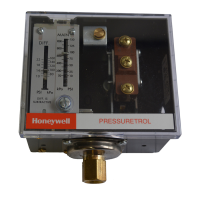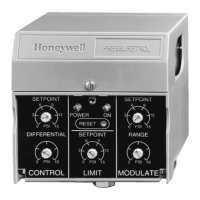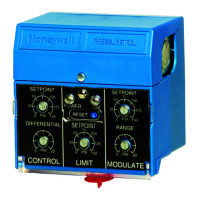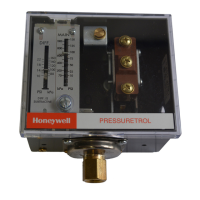8 www.honeywell.com
PRO3200 Installation
Product Overview
2 Product Overview
The Intelligent Controller is the heart of the PRO3200 and provides the real time
processing for the connected I/O interfaces.
The PRO3200 is designed to operate without the need for a PC. It can be connected to
a WIN-PAK host computer using direct serial communication, dial-up modem, or
TCP/IP network connection. The PRO3200 holds the database for the subsystem
configuration and card holders, and the event log buffer, which is in battery-backed
memory.
2.1 PRO3200 and PRO2200
• The PRO3200 controller configuration and operation is similar to the
PRO2200 controller; both use the Pro-Watch at the front end.
• You can use the PRO2200 controller interface to configure the PRO3200
hardware settings.
Note: The PRO32IC controller is compatible with the following Honeywell modules:
PRO22R1, PRO22IN, PRO22OUT, PRO22R2, PRO32R2, PRO32IN, and
PRO32OUT.
2.2 Port Settings
• Port 0 provides the host-embedded Ethernet interface.
• Port 1 is for RS-232 or RS-485 2-wire serial interface connections.
• Ports 2 and 3 are for RS-485 2-wire downstream support for connecting 32
I/O devices. See Table 1 'PRO3200 Jumper Settings' on page 10 for more
information on how to configure the port settings.
2.3 Other
• An on-board real time clock maintains the date and time, taking into account
leap year and accounting for global time zones and daylight savings time
changes.
• The database for the system configuration and card holders are stored in
FLASH memory.
• The event log buffer is stored in battery-backed memory.
• Configuration data and event/status reports are communicated to the host via
on-board 10-BaseT/100Base-TX Ethernet port or Port 1.
• Transactions are stored in 1 MB of battery-backed SRAM. The maximum
number of transactions stored while the host is offline is 50,000.
• Cards are stored in Flash memory and read into DRAM when the board is
powered up. The amount of storage available for cards and biometric records is
15 MB. The maximum number of cards depends on the card record database
configuration, but the number is approximately 300,000. This maximum is
dependent on how the card is configured with more space per card used with
longer card number, more clearance codes, and so on.

